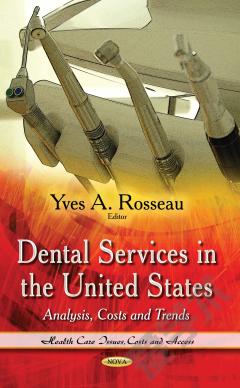Dental Services in the United States: Analysis, Costs and Trends
High rates of dental disease remain prevalent across the nation, especially in vulnerable and under-served populations. According to national surveys, 42 percent of adults with tooth or mouth problems did not see a dentist in 2008 because they did not have dental insurance or could not afford the out-of-pocket payments, and in 2011, 4 million children did not obtain needed dental care because their families could not afford it. In 2011, the Institute of Medicine reported that there is strong evidence that dental coverage is positively tied to access to and use of oral health care. For families without dental coverage, federally funded health centers may offer an affordable dental care option. Health centers are required to offer sliding fee schedules with discounts of up to 100 percent for many low-income patients. This book examines dental services in the United States with a focus on (1) trends in coverage for, and use of, dental services; (2) trends in payments by individuals and other payers for dental services; and (3) the extent to which dental fees vary between and within selected communities across the nation. To do this work, the Government Accountability Office (GAO) examined the office of Health and Human Services (HHS) national health survey data and national dental expenditure estimates, dental insurance claims data, and health center dental fees in 18 selected communities (based on census region, population, and dental claims volume).
{{comment.content}}








 京公网安备 11010802027623号
京公网安备 11010802027623号